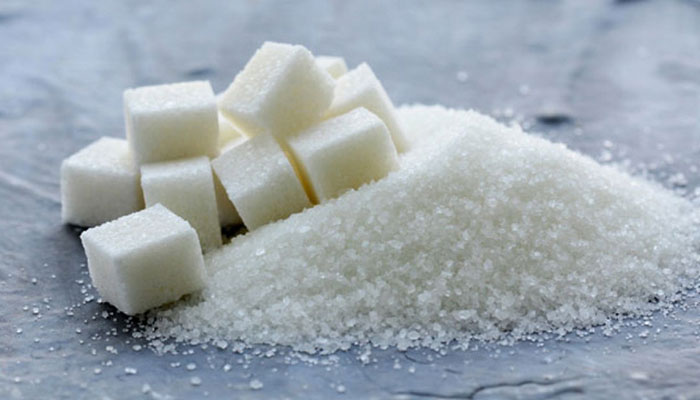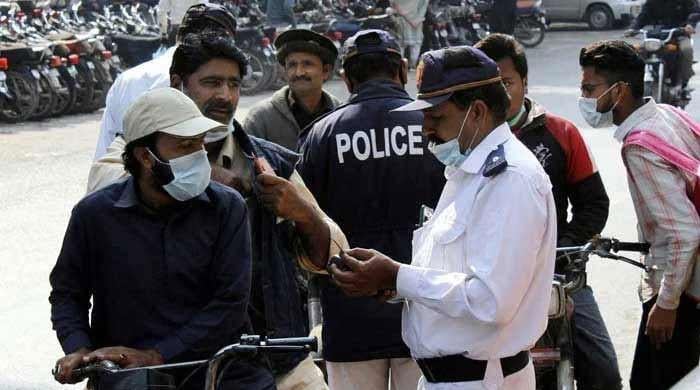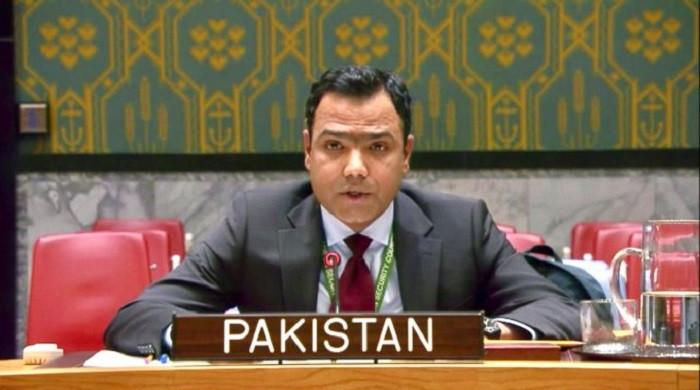Key takeaways from the probe into sugar and wheat shortages
Dated March 24, the report into the shortages has been prepared by a four-member committee headed by FIA director Wajid Zia
April 07, 2020

Last week, preliminary reports of investigations, into last year’s price hike and shortage of wheat and sugar, were made public. The reports have been prepared by a four-member committee headed by Wajid Zia, the director of the Federal Investigation Agency.
While the final reports are slated for April 25, here are some key takeaways from the interim findings:
Sugar
Demand vs production
— The year 2016, 2017 and 2018 were peak years for sugarcane production. As a result, the quantity of sugar produced was much higher than the national demand.
— In 2019, the total cultivation area of sugarcane decreased by 2.68% in Pakistan, compared to the previous year. However, the production of sugarcane increased marginally by 1% in the same period. As a result, a perception existed in the market that less cultivation meant less production, which led to a spike in the price of sugar bags.
— From January to June 2019, the price of sugar per kg increased by Rs18. And it went up again in January 2020.
— In order to protect farmers, the government provided a support price, in other words, it fixed the price at Rs190 per 40kg for Punjab, Rs190 for KP and Rs192 for Sindh. A support price is fixed by the provincial governments to motivate growers to increase cultivation. However, this measure was announced too late, during the crushing season, and hence did nothing to surge cultivation.
Findings
The committee recommends that the government consider a proper mechanism to calculate a support price and to also earmark the target area for sugarcane cultivation. It is shocking, it adds, that the federal government did not have any clue about how to calculate a support price.
The role of the sugar mills
— Initially, some mills purchased sugarcane at a price of 15% higher than the support price. One reason was that farmers were unwilling to sell it at the government-approved price, citing it to be too low.
— Then on December 30, 2019, sugar mills in Punjab called a strike and many shut down. The Pakistan Sugar Mills Association blamed the closure on low availability of sugarcane in the country. They also claimed that the low produce increasing their overheads and caused losses.
— Out of the 39 mills in Punjab, 27 shut down. In Sindh, 10 out of 32. They reopened on January 11, after negotiations with the government.
— The inquiry report rubbishes the Association’s claim. It states that the shutdown was to put pressure on farmers to sell their sugarcane at lower prices. It adds that the reason given by mills of low availability is not plausible, as ample was available.
— The PSMA also told the committee that they change factory prices of sugar as the demand increases.
Findings
The inquiry report states that it finds it difficult to comprehend that once a fair profit margin is already added in the factory price, then how can the mills change the price due to demand. “This opens up the possibility of manipulations of prices by creating artificial demand and withholding supply.”
Manipulation and cartelisation
— To understand the manipulation and cartelisation of sugar mills, concrete evidence is required which can only be obtained through a proper forensic audit of the mills, the report highlights. However, it goes on to explain that a few mills in the sector control the industry.
— Six groups control 51% of the production of sugar and have political influence.
· JDW group - 6 mills
· RYK Group - 5 mills
· Al Moiz Group – 5 mills
· Tandlianwala Group – 3 mills
· Omni Group - 10 mills
· Sharif Family - 9 mills
· Others - 51 mills
Findings
“These groups have the capacity to manipulate the market by joining hands,” the report states, adding that most of these sugar mills worked in “collusion” and offered farmers a very low price of Rs72 per kg to buy their produce.
Hoarding of sugar
— On hoarding, the report explains that the stocking of sugar is not being monitored despite laws in Punjab and Sindh. Barely any go-downs are registered. “This again leads to complete dependency on the PSMA for assessment of the stock in the country.”
An export crisis
— On September 2018, the government decided to export 1 million tons of sugar. The decision was approved by the ECC.
— During the same period, the minister of food security raised alarm about the low production of sugar in the upcoming season due to shortage of water. Yet, export was recommended.
— In April-May 2019, Punjab raised concern about the rising prices of sugar. Still, export was not banned.
— In 2020, a subsidy of billions of rupees was allocated for the export of sugar. The largest of which went to JDW Sugar Mills and JK colony, owned and controlled by Jehangir Khan Tareen. The second-largest dole out went to Shamim Ahmed Khan’s mills and then to Omar Sheryar, the relative of Khusro Bakhtiar. “It may be noted that Chaudhry Munir and Monis Elahi are also partners of this group”, the reports explains.
— The probe adds that it “can be seen that the sugar mill owners who availed the maximum subsidy had political clout and influence in decision making and tried to gain maximum benefit.”
Findings
The exporters of sugar benefit in two ways, first they made a profit from the increase in sugar prices and second, they took home a government-approved subsidy.
Wheat
Planning failures in Islamabad
- The federal and provincial governments procure 20 per cent of the wheat crop every year to ensure food security during dry months, which is before the arrival of a fresh crop. However, in 2018-2019, Pakistan’s total annual production was 24.4 million tons much less than expected, due to bad weather and hailstorms. This was the lowest annual wheat production in five years.
- The ministry of food security in Islamabad, states the report, should have raised alarm and advised the federal government to adopt stringent immediate corrective measures, after the low production of wheat. Instead, in November 2018, it recommended to the ECC that surplus wheat be exported, mostly to Afghanistan.
- The ECC then allowed a stock of 500,000 tons wheat in 2018 and another 500,000 ton in 2019, expecting a bumper crop that year.
- In 2019, a large amount of the wheat crop was damaged. Troublingly, the report adds, that no mechanism for accurate crop assessment, on scientific basis, exists in the country. This means there is no reliable figure for crop damage.
- Yet, the ministry of food informed the federal government in May and June that the availability of wheat was “well above” and there was no need to ban the export.
- In July, though, the ministry “belatedly” realized that that the export policy needed to be revised and exports banned. While flour was prohibited from being transported out of the country, the export of wheat products, like suji and maida, continued till November 2019. “The ministry was aware in June of all wheat statistics,” states the report.
Provinces: where does the blame lie?
- Punjab, which has the highest target of wheat procurement of 4 million tones, only managed to procure 3.32 million tons, in 2019. This was the lowest it had procured since 2016.
- Low stocks, overplay of exports, corruption and hoarding by the private sector resulted in a price hike and wheat shortage in the province.
- Strangely, Punjab took a conscious decision to halt procurement at 3.32 million tons, “without a reason”.
- The special branch Punjab had been pointing out wheat shortage and price hike. It sent two reports, dated March 6, 2019 and March 9, 2019, to the law minister, chief secretary, secretary to chief minister and additional secretary home Punjab. Yet, no action was taken.
- The reports adds that Punjab’s wheat quota is on the basis of the grinding capacity of its flourmills, instead of its population. “This system needs to be revised totally on the basis of population.”
- Flourmills were involved in malpractices in cahoots with the food department employees. Mills are usually given subsidy on the basis of the wheat they grind. But many were grinding less than their capacity. Still, government subsidies kept coming.
- Only 889 chakkies in Punjab are registered, over 4,877 are unregistered. They sell flour at their own rates, disregarding government prices.
- The entire operation of the food department of every province is “outdated, manual and rampant with lack of capacity and excessive malpractice.” Corruption is widespread, said the report, in the lower formation of the food department. “The whole system needs to be reformed with information technology at every stage.”
- Another concern in Punjab was that four secretaries of the food department were changed in less than one year. “This frequent change at the highest level leaves little room for any head of department to focus on the job and speaks volumes about the seriousness given to this important ministry.”
The probe further adds that officers are posted not on merit but on political interventions and nepotism. It gives the example of an officer of the education department who was later moved and posted as deputy food Rawalpindi.
- Sindh’s decision to not procure wheat last year is “inexplicable and is a major factor for starting the wheat crisis”. This created panic in the market.
- Khyber Pakhtunkhwa too did not procure wheat on time and the allegations of smuggling to Afghanistan via the province still persists.
- Balochistan did not procure wheat due to non-availability of funds.
Findings
- The current crisis was due to the failure of policy and planning at both provincial and federal levels.
- A total ban on export should have been imposed in June not November 2019.
- At the federal level, the responsibility for above failure lies with the secretary of ministry of food security and research, Hashim Popalzai.
- In Punjab the responsibility lies with the former food secretary Naseem Sadiq. The minister of food Samiullah Chaudhry is to be blamed for not devising any reform agenda “to address the chronic ailments in the department”.









